PREVIOUS
The Election commission of India and Elections History - Part 4
May 8 , 2024
423 days
2764
0
(இதன் தமிழ் வடிவத்திற்கு இங்கே சொடுக்கவும்)
Introduction of Electronic Voting Machine (EVM)
- India’s democratic process faced challenges like booth capturing, prompting the introduction of the Electronic Voting Machine (EVM) in the Parur Assembly Constituency of Kerala in 1982.
- This pilot showcased immediate benefits, streamlining manpower needs, eradicating invalid votes, and expediting the counting process.
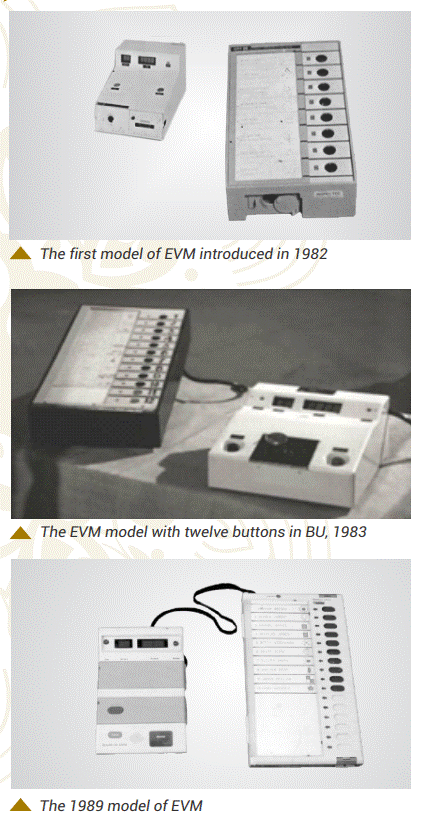
Legislative Amendment and Nationwide Adoption
- An amendment to the Representation of the People Act, 1951, facilitated the widespread adoption of EVMs across India following a Supreme Court verdict concerning the Parur by-election.
- In 1988, this amendment paved the way for the comprehensive integration of EVMs into the electoral process.
- A significant milestone was reached in the 2004 Lok Sabha Elections when EVMs achieved 100 percent coverage, symbolizing progress in India’s democratic framework.
- In May 2001, EVMs were used in all constituencies for the state assembly elections in Tamil Nadu, Kerala, Puducherry and West Bengal.
- EVM was developed by state-owned Electronics Corporation of India and Bharat Electronics.
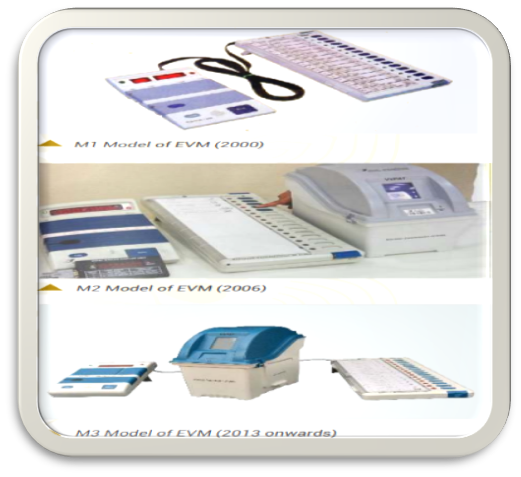
Voter Verifiable Paper Audit Trail (VVPAT)
- To enhance voter confidence, the Voter Verifiable Paper Audit Trail was introduced in 2013.
- This addition allows any voter to verify their recorded vote, with VVPAT slips counted for five randomly selected Polling Stations of each Assembly Constituency/Assembly Segment.
- Remarkably, since its introduction, there hasn't been a single instance of mismatch between the results of VVPAT and Control Unit (CU), underscoring the credibility of EVMs.
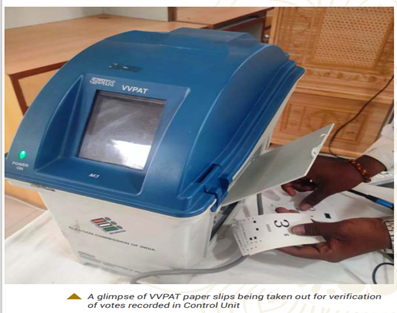
Understanding the ECI-EVM System
- The Indian Electronic Voting Machine (EVM) system, also known as ECI-EVM, embodies devices exclusively tailored for elections under the Election Commission of India’s regulations.
- Comprising the Ballot Unit (BU), Control Unit (CU), and the later integrated Voter Verifiable Paper Audit Trail (VVPAT), ECI-EVMs ensure accuracy and efficiency in the electoral process.
- Recognizing the need for further transparency and accountability, the Voter Verifiable Paper Audit Trail (VVPAT) emerged.
- Integrated with EVMs, VVPAT enables voters to confirm the accuracy of their ballots.
- A printed slip displays the candidate’s details, providing a tangible record for verification.
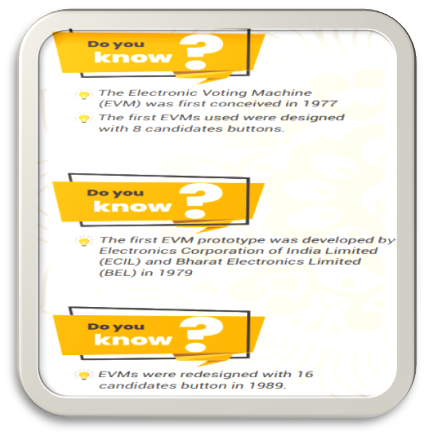
Legal Framework and Implementation
- The Supreme Court’s decision in 2013 authorized the Election Commission to introduce VVPAT in phases, deeming it essential for fair elections.
- VVPATs were first utilized in the Noksen Assembly Constituency by-election in Nagaland in 2013.
- Since then, they have been employed in selected constituencies during General and State Legislative Assembly Elections, enhancing the credibility and transparency of the voting process.
- In 2019, the Supreme Court directed that a small percentage (2%) of the VVPATs shall be verified to ensure the reliability before certifying the final results.
The advantages of the EVM over the traditional ballot paper / ballot box system:
- It eliminates the possibility of invalid and doubtful votes which, in many cases, are the root causes of controversies and election petitions.
- It makes the process of counting of votes much faster than the conventional system.
- It reduces to a great extent the quantity of paper used thus saving a large number of trees making the process eco-friendly.
- It reduces cost of printing (almost nil) as only one sheet of ballot paper is required for each Polling Station.
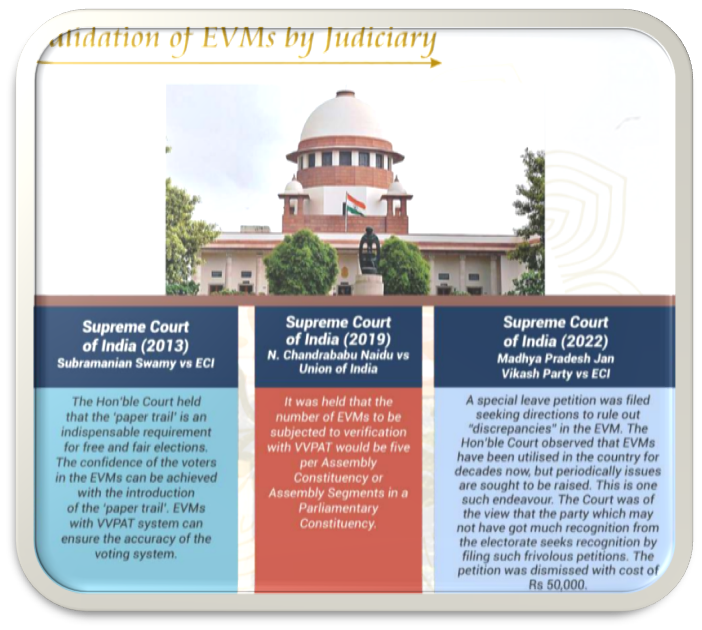
Comparison between EVMs and Conventional Paper Ballot System
- In the conventional paper ballot system, voters mark their choices on a printed paper ballot, indicating their preferred candidate by placing a mark in the designated space.
- After marking, the ballot paper is folded and deposited in a ballot box.
- During counting, only properly marked votes are considered, and manual counting is susceptible to errors and manipulation, often prolonging the process.
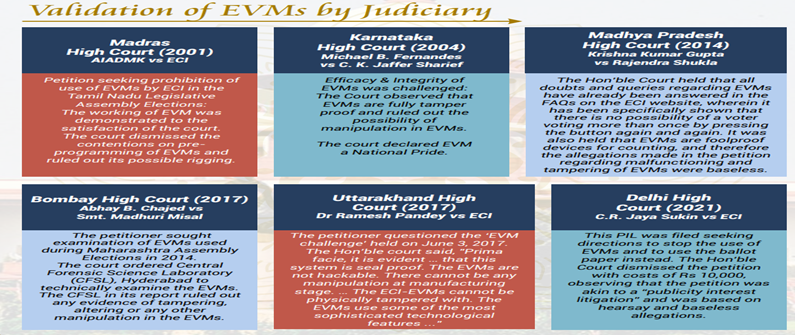
Issues with Paper Ballot Voting
- Invalid Votes: Many votes become invalid due to improper marking or ink smudging.
- Ballot Box Vulnerability: Ballot boxes are prone to "stuffing with spurious votes" during booth capturing.
- Pre-marked Ballot Papers: Instances of voting with pre-marked ballot papers have been reported.
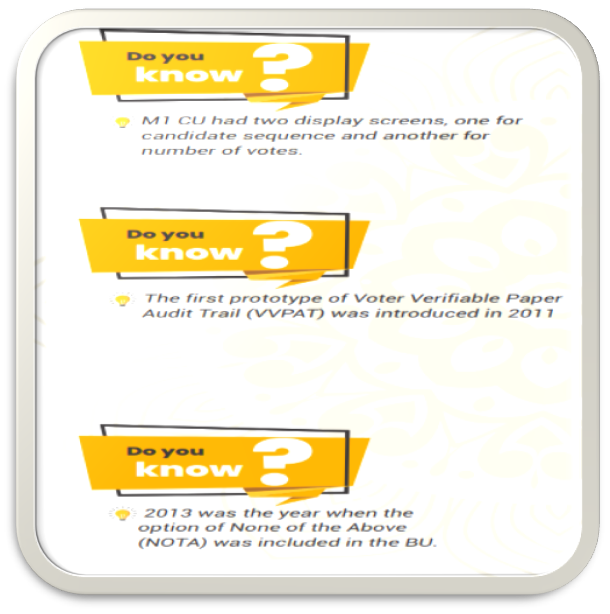
Functioning of ECI-EVM System
- In the ECI-EVM system, the Control Unit (CU) is managed by the Presiding Officer, while the Ballot Unit(s) and Voter Verifiable Paper Audit Trail (VVPAT) are placed inside the Voting Compartment.
- Instead of issuing paper ballots, the Polling Officer activates the electronic ballot by pressing the "Ballot Button" on the Control Unit.
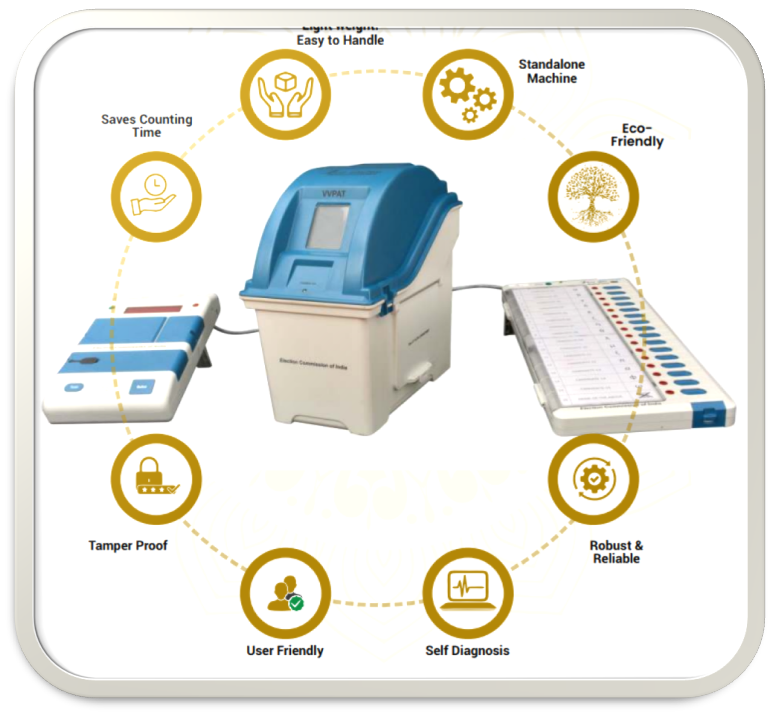
Casting Vote through EVMs
Voting Process:
- Voters cast their votes by pressing the "blue button" on the Ballot Unit against their chosen candidate.
- A red LED glows to indicate the selection.
- A paper slip displaying the candidate's details is generated and visible through a transparent window on the VVPAT for about 7 seconds.
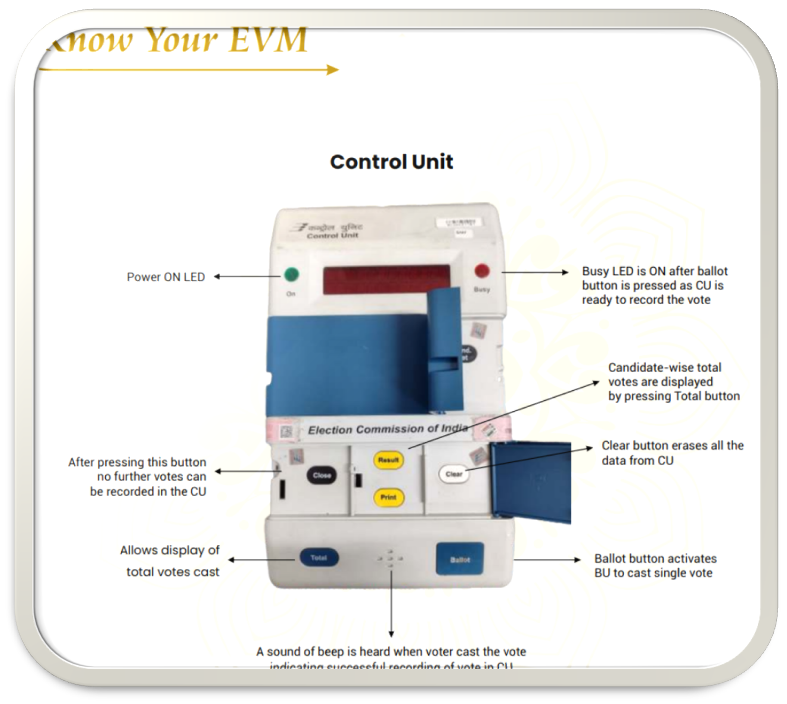
Verification:
- Voters can verify that their vote is cast as intended by observing the printed slip.
- The slip is then automatically cut and stored in a sealed drop box of the VVPAT.
Confirmation:
- A loud beep from the Control Unit confirms successful registration of the vote.
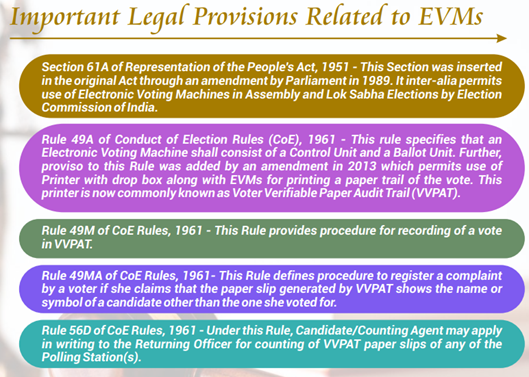
Technical Knowledge Requirement
- No technical knowledge is required for casting a vote on the EVM.
- Ordinary citizens can easily participate in the voting process using ECI-EVMs, ensuring inclusivity and accessibility in the electoral process.
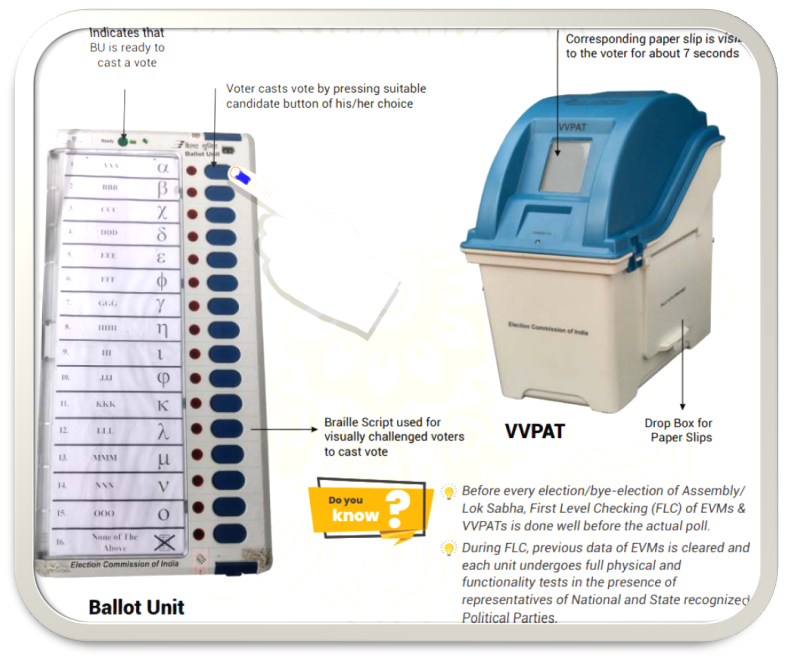
Advantages of ECI-EVM Voting System
- Elimination of Invalid Votes: Voting through ECI-EVMs via button pressing eradicates the possibility of invalid votes, a common issue in the paper ballot system.
- Prevention of Booth Capturing: EVM technology combined with stringent administrative procedures has effectively eliminated booth capturing, rendering it futile even if attempted.
- Time Constraint on Voting: The EVM system restricts the number of votes to a maximum of four per minute, significantly prolonging the time required to cast a substantial number of votes.
- This delay provides ample opportunity for security forces to respond to any attempted booth capturing.
- Prevention of Post-Close Voting: Once the CLOSE button is pressed at the end of polling, no further votes can be cast, ensuring the integrity of the voting process.
- Quick and Error-Free Vote Counting: ECI-EVMs ensure swift and accurate counting of votes, free from errors and manipulation, leading to a more efficient electoral process.
- Instant Verification for Voters: Through the Voter Verifiable Paper Audit Trail (VVPAT), voters can immediately verify that their votes have been accurately cast, enhancing trust and confidence in the electoral system.
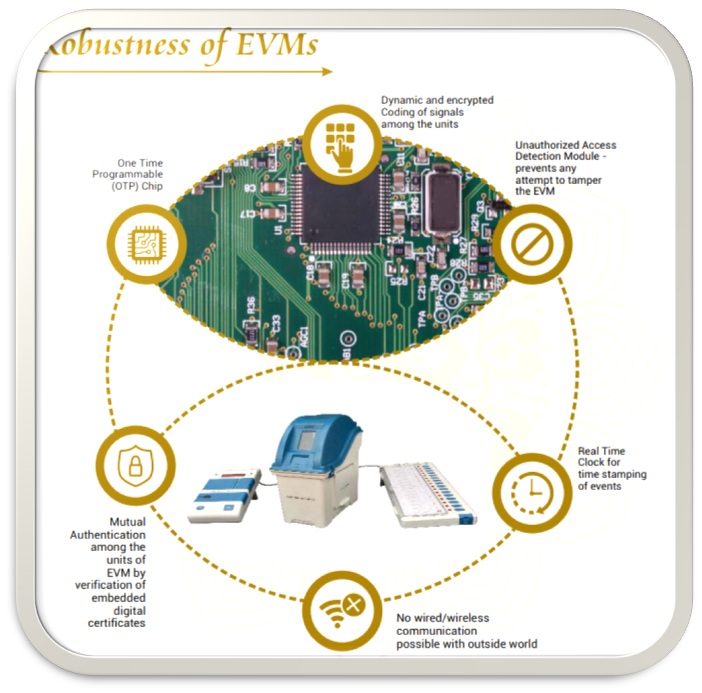
Key Features of EVMs/VVPATs:
- Unique Serial Number: Each unit possesses a distinct serial number stored in its memory, matching the laser-marked number and barcode on its rear side.
- Real Time Clock (RTC): Embedded in the Control Unit (CU), the real-time clock displays the current date and time upon unit activation.
- Malfunctions are indicated as 'CLOCK ERROR.'
- Battery Status: EVMs operate on a specialized power pack, with the battery status displayed on the CU screen upon power ON.
- A 'CHANGE BATTERY' message appears when the battery is low.
- Print Capability: Poll data results can be printed, if necessary.
- Mutual Authentication: CU, BU, and VVPAT feature robust mutual authentication capabilities, preventing unauthorized device connections.
- Power Saving Mode: Units enter power-saving mode when idle, extending battery life.
- Braille Integration: Ballot Units feature moulded Braille numerals for visually impaired voters.
- Standalone System: EVMs operate independently, devoid of wired or wireless network connections.
- Unauthorized Access Detection Module (UADM): Embedded in the machine, UADM disables the EVM and destroys the digital certificate upon physical access attempts to the microcontroller or memory.
- Advanced Encryption Techniques: Encrypted communication between units ensures data security without proper decryption algorithms.
- Automated Self-Diagnostics: EVMs conduct self-health checks upon every power ON.
- Dynamic Key Press Coding: Key presses are dynamically coded, preventing signal decoding between Control Unit, Ballot Unit, and VVPAT.
- No Radio Frequency Transmission: EVMs lack radio frequency (RF) communication capability, ruling out tampering via wireless protocols like Bluetooth or WiFi.
- One-Time Programmable Microcontroller: EVM microcontrollers are one-time programmable, with application software programmed during manufacturing.
- Real-Time Clock for Event Stamping: Each key press is recorded with a date and time stamp in real-time.
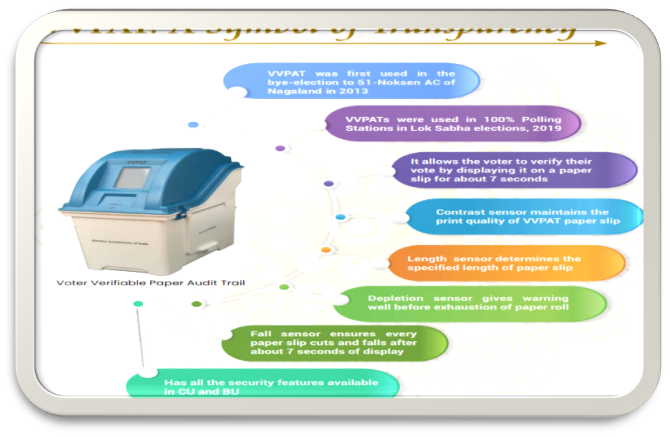
Indigenous Manufacturing by PSUs
- EVMs/VVPATs are not imported but meticulously designed and manufactured domestically by two distinguished Public Sector Undertakings (PSUs):
- Bharat Electronics Limited (BEL) is operating under the Ministry of Defence, and Electronics Corporation of India Limited (ECIL) is functioning under the Department of Atomic Energy.
- This domestic production is conducted under the meticulous guidance of the Technical Experts Committee (TEC) established by the Election Commission of India.
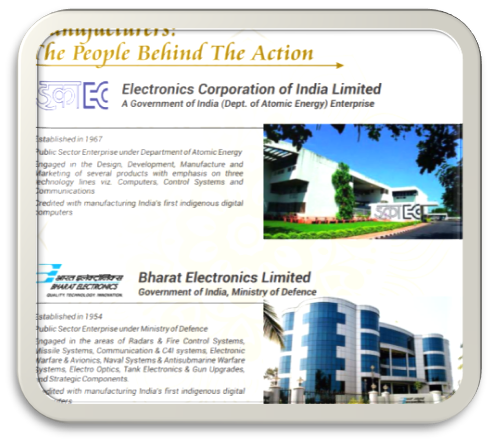
Capacity and Functionality
- The ECI-EVM system boasts a robust capacity, capable of recording a maximum of 2,000 votes per session.
- However, in practice, it typically accommodates around 1,500 votes.
- Each Ballot Unit is equipped to handle up to 16 candidates, inclusive of the None of the Above (NOTA) option.
- Remarkably, a single Control Unit has the capability to connect with up to 24 Ballot Units.
- It is forming an EVM set with the potential to cater to a maximum of 384 candidates, including NOTA.
- EVM and VVPAT do not require any external power supply.
- EVM and VVPAT run on their own battery/ power-packs supplied by Bharat Electronics Limited / Electronics Corporation of India Limited.
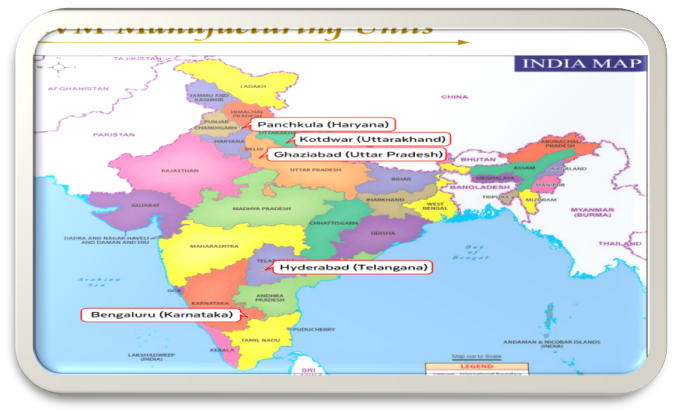
-------------------------------------
Leave a Reply
Your Comment is awaiting moderation.


